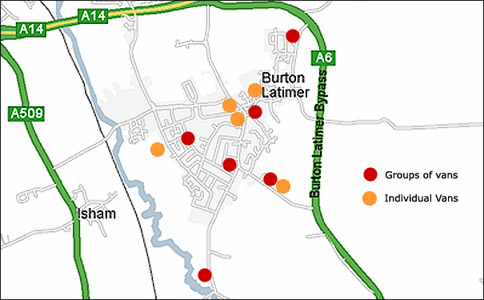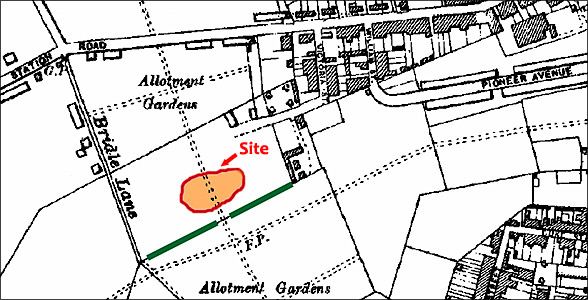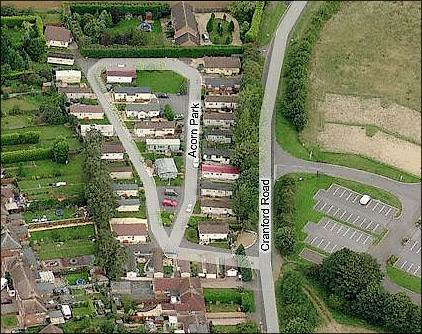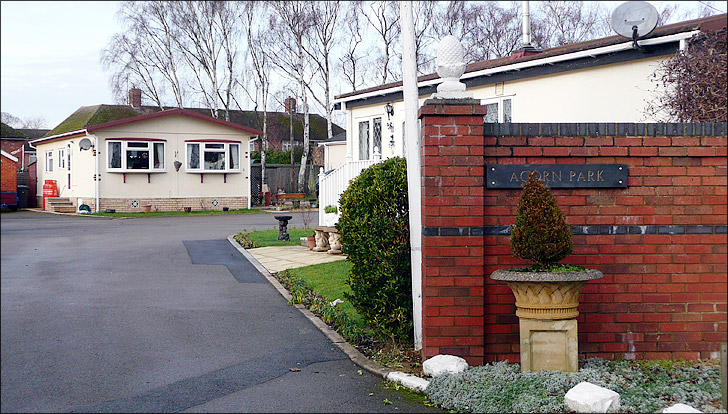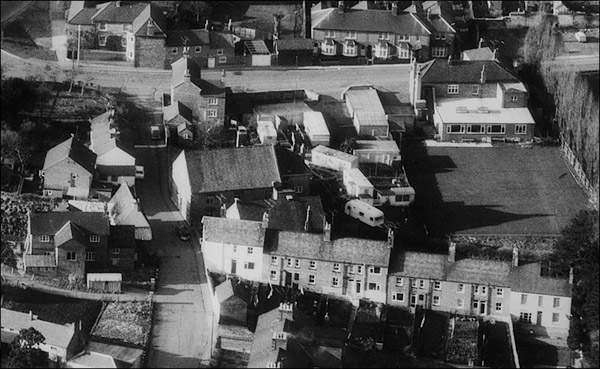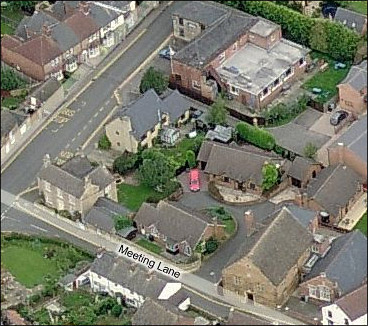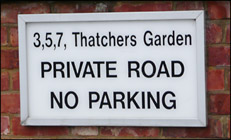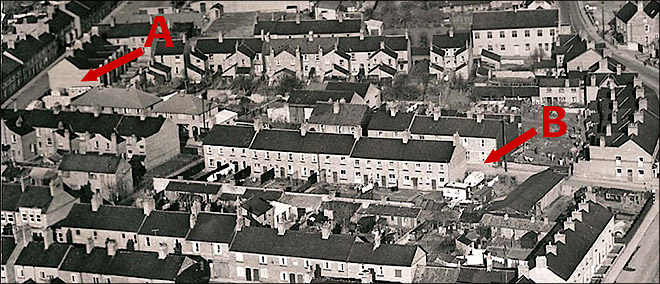|
|||||||||||||
|
|||||||||||||
| In the popular press, caravan sites - leaving aside the thorny issue of Travellers - are generally portrayed as one of three types: those used for temporary holiday accommodation near the coast; those run by organisations like The Caravan Club which give short-term-stay facilities for people who like to tour and tow a caravan with them; and those which are more or less permanently occupied by people who have invested in residential caravans.
In the two decades after the Second World War, Burton Latimer had a number of sites where caravans were located. All but two have disappeared and been replaced by standard housing, but some of the sites mark an important phase in the development of the town. Burton achieved Urban District status in 1923, and the continued growth of the shoe and clothing trades in the first part of the last century ensured that the town continued to grow accordingly. This growth was interrupted by the Second World War, but after the War, it recommenced. By this time, the size of the town was such that it put increasing strain on the infrastructure of the public utilities: more homes meant more provision of gas, electricity, water, and sewerage/drainage, and it was the sewerage system which was the first to reach the limits of its capacity - which happened in the mid-1950s. Until that capacity was increased (which was done by opening a new sewage farm at Wellingborough) all housing development in the town had to stop. It must be remembered that it was not until the latter part of the last century that building regulations stopped surface water (in particular from roof gutters, gulleys and downpipes) being emptied into the main sewer system. Until that time, the system had to deal with carrying away annual rainfall as well as the contents of domestic and commercial sinks and toilets, so it is easy to see why the system reached capacity in the 1950s. With a temporary halt made to housing development, there was a small increase in the number of caravans and sites around the town. Put simply, for a very short period of time in Burton's history, they were the only practicable way of people having a new place of their own to live, even though, as this article shows, they sometimes felt stigmatised by the fact that they lived in this type of accommodation. This page records what evidence remains of that period of the town's life. The Park Road Site In the 1950s, this was the largest caravan site in Burton. Unfortunately, no aerial photos or maps are currently available to show the extent of it. The 1957 Electoral Roll lists 17 separate occupied caravans there. Park Road at the time was rough ground: a track led off Regent Road to the site, which was roughly between the present entrance to Nene Road and the west side of Meadowside Junior School.
A pathway led from Regent Road, through the site, through a gap in a tall hawthorn hedge, and into the allotments which filled most of the space from what are now Queensway and Meadowside schools. By the 1960s, new developments were in the air: the move was on to link Bridle Road with an extended Queensway, and drive Churchill Way from the High Street to Queensway. Park Road was to be built up and extended through to Churchill Way. The huge building plans took the greater part of twenty years to complete, but the Park Road site stood in the way. It disappeared in the early 1960s.
In the 1950s, as the Cranford Road Estate was being developed, five caravans were sited about a hundred metres past the entrance to Spinney Road, on the west side of Cranford Road beside the former small bridge on Cranford Road where the tramway of the former ironstone workings went under the road. After the ironstone workings ceased, the land became available for other purposes. The tramway gullet was filled in and although the land would have been unsuitable for normal housing because of the danger of subsidence, it could safely bear the weight of caravans. The site was first owned by Tommy Miller, and was subsequently sold to the Squires family. The caravan site has been considerably extended and upgraded over the past fifty years, and the early mobile caravans were replaced by larger, more residential models, before these too gave way to more permanent buildings. The site still functions today as Acorn Park.
At the far end of Finedon Road, just before the bridge over the Ise, and near the site once occupied by the southerly of Burton's two water mills (click here for map and details) there used to be a collection of three caravans. The Electoral Roll of 1957 lists the families who lived there. Earlier, the site had seen the prototype of the Latimer Mobile Homes.
This was a later development, situated behind the former Thatcher's Arms public house. No families are listed in 1957 as living in caravans on this site, but the development seems to have happened shortly afterwards, and the aerial photo of 1972 reproduced below shows a collection of caravans accessed from Church Street.
By the end of the 1970s, the council was taking steps to close the site, and in January 1980 the local paper carried a report of a public enquiry into whether the site should remain. Despite representations on behalf of the owners of the site and the vans, the council's view was accepted by the enquiry, as outlined in another local paper report which also states that the site was to be cleared by the end of 1981. Ironically, although the submission to the enquiry by the site owner stated that the site was "unsuitable for building purposes", modern housing now stands there, accessed from Meeting Lane.
The Strudwick family were a fairground family, and had owned carousels and swingboats which they operated at various fairs and feasts across the county and beyond. They owned three sites in the south end of town, two of which are shown below in an aerial photo from 1951:
Site A was the main site and is still owned by the family today. it is situated on the corner of Spencer Street and Rosebery Street behind corrugated iron fencing which incorporated two swing panels to allow the showman caravans to be brought out onto Spencer Street when the family were on the road in the summer months. Site B was at the bottom of Rosebery Street. The photo above shows a modern caravan end-on to the street and two showmen's caravans - one white and one dark - which may mean that more than one family was living there at the time. This site later had the caravans replaced by a modern bungalow - built by Tony Burbidge, who had married Margaret Strudwick. The third site was at the bottom of Higham Road - on the left, just before the brook. Like the others, it was used for residential purposes until the "fairs & feasts" season started, when the family were on the road and the site was vacant. For a few years this was the Gray family. In later years the Strudwicks built a bungalow on the top end of the land and ran a second-hand van business from the rest of the site. This business later became Strudwick Motors.
Some sites with single caravans were used as temporary homes for a short period of time, either as simply a place for temporary accommodation, or as a make-shift arrangement pending the building of a permanent home. The Rectory The Church Street Electoral Roll of 1957 lists a caravan in the grounds of the Rectory as being occupied by the Wadsworths. Mr Wadsworth was known as "The Crockery King" and went round markets and fairs selling crockery at knock-down prices. Bridle Road Frederick Masters had a small farm with a few cows, and in the 1950s he rented the fields between Bridle Road and the Ise brook. He brought a caravan to the site, where he lived with his wife and son until he left in about 1959. Higham Road In the 1950s, Frankie Underwood had a smallholding and bungalow halfway up Higham Hill. The bungalow was (and in 2009 still is) the last home on the left before the two houses at the top of the hill. In the 1934 electoral roll, he was listed as living there in a caravan. High Street & Coleman's Green (Kettering Road) At various times there were old showmen's caravans parked behind in the yard behind the rown of shops which includes the chip shop, and also on Coleman's Green (the site now occupied by the showrroms of Prescott Motors). |
|||||||||||||
